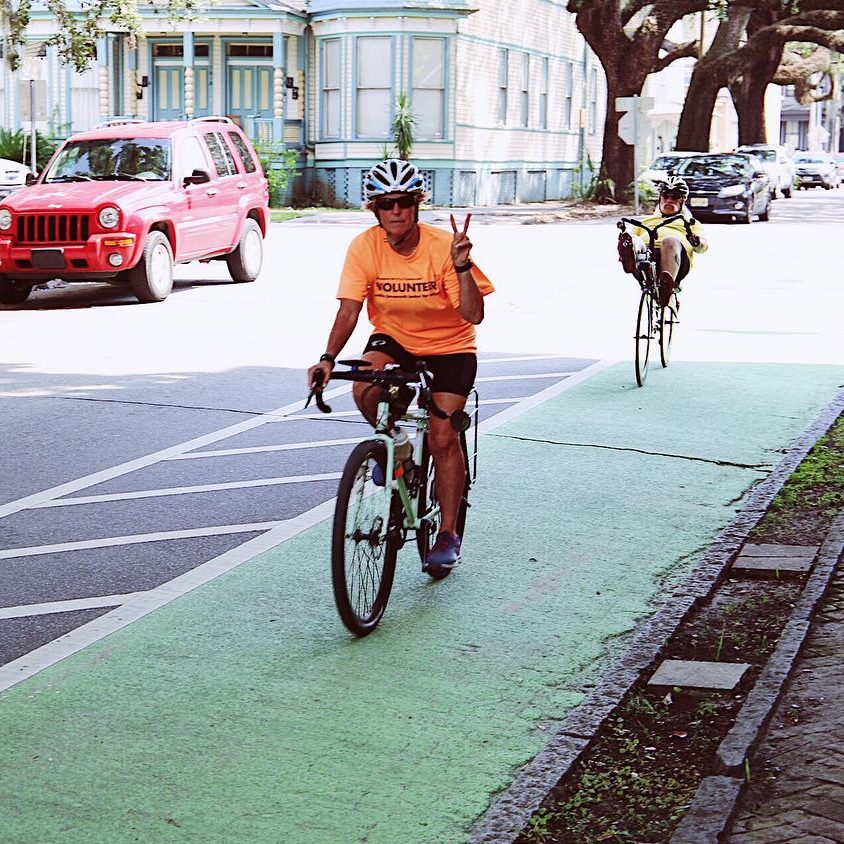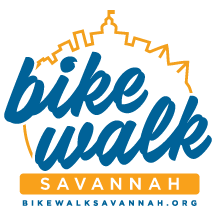
This page serves as a resource and overview for common laws, best practices, and safety tips.
Want to learn more? Check out Georgia Bikes’ Resources and their Bicyclist Pocket Guide, or sign up for an Education Class.
In Georgia, as in most states, a bicycle is legally a “vehicle.” This classification means that general vehicular traffic law applies to the operation of a bicycle. However, the vehicular code and various regulations include many qualifications for specific classes of vehicles. Wherever the code or regulation uses the phrase “vehicle,” that section applies to all vehicles, including bicycles. When the term “motor vehicle” is used, the code does not apply to bicycles.
Ride your bike in the same direction as traffic on the roadway.
Do not ride your bike on sidewalks, unless you are under 12 years of age or as otherwise specified by your local government. This does not include specified multi-use paths.
Pedestrians always have the right of way. Always yield to pedestrians. As our potential to cause harm increases on the street, so does our responsibility to others. Avoid stopping in the crosswalk or near curb ramps, especially in pedestrian-heavy areas.
Follow all traffic control signals — like stopping at red lights and stop signs.
Every bicycle when in use at nighttime shall be equipped with a white light on the front and a red rear light or reflector.
No bicycle shall be used to carry more people than the number for which it is designed and equipped — a.k.a. no handlebar riding!
Every person operating a bicycle upon a roadway shall ride as near to the right side of the roadway as practicable, except when:
- Turning left;
- Avoiding hazards to safe cycling;
- The lane is too narrow to share safely with a motor vehicle;
- Traveling at the same speed as traffic;
- Passing a standing vehicle or one proceeding in the same direction; or
- There is a right turn only lane and the person biking is not turning right.
Under the age of 16? You need a helmet!
Do not ride more than two abreast except on bicycle paths, bicycle lanes, or parts of roadways set aside for the exclusive use of bicycles, or when a special event permit issued by a local governing authority permits riding more than two abreast.
Learn more at GeorgiaBikes.org
Pedestrians crossing at any point other than a marked crosswalk or an unmarked crosswalk at an intersection shall yield the right of way to all vehicles on the roadway.
When a pedestrian signal says WALK, you may proceed across the roadway. When it is flashing DON’T WALK, finish your crossing and do not start crossing if you have not entered the roadway. When it is steady DON’T WALK, do not start crossing.
“Crosswalk” means (A) That part of a roadway at an intersection included within the connections of the lateral lines of the sidewalks on opposite sides of the highway measured from the curbs or in the absence of curbs, from the edges of the traversable roadway; or (B) Any portion of a roadway at an intersection or elsewhere distinctly indicated for pedestrian crossing by lines or other markings on the surface.
Crosswalks exists at most intersections whether or not they are marked by painted lines.
“Jaywalking” is not a legal term and does not appear in the Georgia Code. Even so, people often use “jaywalking” to describe a pedestrian crossing outside of a crosswalk. In fact, crossing the street outside of a crosswalk is perfectly LEGAL in most places, as long as the pedestrians yield to traffic.
Do not suddenly leave a curb or sidewalk and walk or run into the path of a vehicle which is so close it is impractical for the driver to yield.
Walking Safety Tips:
- Be predictable, and follow the rules of the road.
- Walk on sidewalks when available and passable.
- If there is no sidewalk, walk facing traffic and as far from traffic as possible.
- Be alert! Never assume a driver sees you.
- Whenever possible, cross streets at crosswalks or intersections. Look for cars in all directions.
- If a crosswalk or intersection is not available, locate a well-lit area where you have the best view of traffic. Wait for a gap in traffic that allows enough time to cross safely; if you are crossing a multi-lane road, use extra caution when crossing each lane.
- Watch for drivers entering or exiting driveways or backing up in parking lots.
More information is available on the Georgia Governor’s Office of Highway Safety Website.
This law was recently updated on July 1, 2021.
The operator of a motor vehicle approaching a bicycle shall approach the bicycle with due caution and shall proceed as follows: 1) Make a lane change into a lane not adjacent to the bicycle if possible in the existing road and traffic conditions; or (2) If a lane change under paragraph (1) of this subsection would be impossible, prohibited by law, or unsafe, reduce the speed of the motor vehicle to a reasonable and proper speed for the existing road and traffic conditions, which speed shall be at least ten miles per hour less than the posted speed limit or 25 miles per hour, whichever is more, and proceed around the bicycle with at least three feet between such vehicle and the bicycle at all times.
